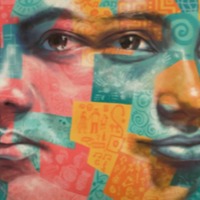
Jasmine
There are an estimated 403,000 people living in modern slavery in the United States (GSI 2018). Sex trafficking exists throughout the country. Traffickers use violence, threats, lies, debt bondage and other forms of coercion to compel adults and children to engage in commercial sex acts against their will. The situations that sex trafficking victims face vary, many victims become romantically involved with someone who then forces them into prostitution. Others are lured with false promises of a job, and some are forced to sell sex by members of their own families. Victims of sex trafficking include both foreign nationals and US citizens, with women making up the majority of those trafficked for the purposes of commercial sexual exploitation. In 2015, the most reported venues/industries for sex trafficking included commercial-front brothels, hotel/motel-based trafficking, online advertisements with unknown locations, residential brothels, and street-based sex trafficking. Jasmine was trafficked at the age of 18 in Connecticut, USA. She grew up in Saugus and Revere, where she started dating a man who coerced her into sex trafficking.

Ali
There are an estimated 403,000 people living in modern slavery in the United States (GSI 2018). Sex trafficking exists throughout the country. Traffickers use violence, threats, lies, debt bondage and other forms of coercion to compel adults and children to engage in commercial sex acts against their will. The situations that sex trafficking victims face vary, many victims become romantically involved with someone who then forces them into prostitution. Others are lured with false promises of a job, and some are forced to sell sex by members of their own families. Victims of sex trafficking include both foreign nationals and US citizens, with women making up the majority of those trafficked for the purposes of commercial sexual exploitation. In 2015, the most reported venues/industries for sex trafficking included commercial-front brothels, hotel/motel-based trafficking, online advertisements with unknown locations, residential brothels, and street-based sex trafficking. Ali was trafficked at the age of 22, in Philadelphia, USA. Heroin addiction led to Ali living on the streets, to prostitution and ultimately, to being trafficked. She was on the streets for five years. This is her story in her own words.
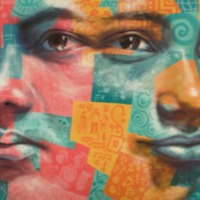
Leann
There are an estimated 17,000 people living in conditions of slavery in Canada (GSI 2018). Both Canadian and foreign citizens are exploited in forced labour and sex trafficking. Forced labour affects migrant workers under ‘low-skilled’ temporary visa streams including the low-wage and primary agricultural streams. These workers are often in restaurants, hotels, agriculture, food preparation, construction or domestic work. Sexual exploitation of Canadian citizens is the most common form of slavery detected by authorities in the country, with 93% of sex trafficking victims being Canadian. Leann developed an addiction issue after a serious industry left her in a wheelchair. She borrowed money to feed her addiction that resulted in her owing money to her traffickers, who forced her into forced criminal activity to pay off her debt. Leanna was forced to open bank accounts, assume fake identities and have multiple IDs to get money for her traffickers. Though she was arrested on a number of occasions, her traffickers were always waiting for her outside jail when she was released. This cycle continued for three years until her traffickers suspected she had stolen from them and locked her in a room where she was sexual and physical abused. She was finally able to escape when one day someone left the door open and she was helped by a passerby.
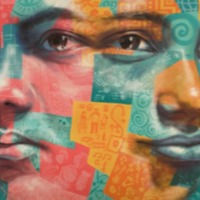
Kat Rosenblatt
There are an estimated 403,000 people living in modern slavery in the United States (GSI 2018). Sex trafficking exists throughout the country. Traffickers use violence, threats, lies, debt bondage and other forms of coercion to compel adults and children to engage in commercial sex acts against their will. The situations that sex trafficking victims face vary, many victims become romantically involved with someone who then forces them into prostitution. Others are lured with false promises of a job, and some are forced to sell sex by members of their own families. Victims of sex trafficking include both foreign nationals and US citizens, with women making up the majority of those trafficked for the purposes of commercial sexual exploitation. In 2015, the most reported venues/industries for sex trafficking included commercial-front brothels, hotel/motel-based trafficking, online advertisements with unknown locations, residential brothels, and street-based sex trafficking. Kat Rosenblatt grew up in an abusive home in South Florida. After her mother left her father and too Kat to a hotel, Kat was befriended by a young girl who over the course of a month groomed her into sex tourism. The first time Kat Rosenblatt’s traffickers attempted to sell her to an older man, she resisted and was left for dead in the street. Though she was able to escape this situation, Kat was trafficked again by a friend’s father who later planted drugs in her school bag. Kat was suspended and became a drug addict. However, after overcoming her addictions, Kat obtained a PhD, wrote a book about her experience and founded her organisation There Is Hope For Me.
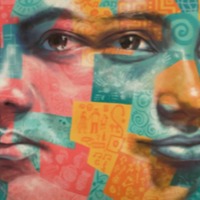
Gaby
There are an estimated 403,000 people living in modern slavery in the United States (GSI 2018). Sex trafficking exists throughout the country. Traffickers use violence, threats, lies, debt bondage and other forms of coercion to compel adults and children to engage in commercial sex acts against their will. The situations that sex trafficking victims face vary, many victims become romantically involved with someone who then forces them into prostitution. Others are lured with false promises of a job, and some are forced to sell sex by members of their own families. Victims of sex trafficking include both foreign nationals and US citizens, with women making up the majority of those trafficked for the purposes of commercial sexual exploitation. In 2015, the most reported venues/industries for sex trafficking included commercial-front brothels, hotel/motel-based trafficking, online advertisements with unknown locations, residential brothels, and street-based sex trafficking. Gaby was suffering from drug and alcohol addiction when she posted an ad online to find a job in modelling or web-camming. Her ad was answered by a college professor who rented an apartment for her and other women to stay in where men would come in to purchase sex. Gaby was afraid to leave because her trafficker had all of her information. He had her ID, her social security card, and he knew where she lived. Gaby was in a controlled environment where she was allowed to leave. She always went back because she was afraid of what would happen if she didn't. One day she found a church, went inside, and wrote a suicide note on a prayer card. The church's female pastor found the note and tracked down Gaby. The pastor told her to not go back and she gave Gaby a place to stay in her family's home. Gaby never went back, she went to rehab and became part of Wellspring Living Program for young girls and women who have been trafficked. She now supports herself with a government job and is raising her 8-year old son.
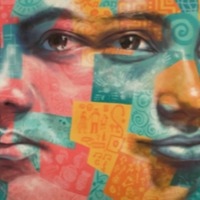
Maya C
There are an estimated 403,000 people living in conditions of modern slavery in the Unites States. Sex trafficking is a form of modern slavery that exists throughout the US. Traffickers use violence, threats, lies, debt bondage and other forms of coercion to compel adults and children to engage in commercial sex acts against their will. The situations that sex trafficking victims face vary, many victims become romantically involved with someone who then forces them into prostitution. Others are lured with false promises of a job, and some are forced to sell sex by members of their own families. Victims of sex trafficking include both foreign nationals and US citizens, with women making up the majority of those trafficked for the purposes of commercial sexual exploitation. In 2015, the most reported venues/industries for sex trafficking included commercial-front brothels, hotel/motel-based trafficking, online advertisements with unknown locations, residential brothels, and street-based sex trafficking. Maya tells of the sexual abuse she suffered as a child and how her subsequent addiction to drugs led her in to a life of prostitution. Maya was forced Maya was forced by people, including her boyfriend to prostitute herself in order to obtain drugs. Maya recalls how a group of men locked her in a room filled with dog faeces, put a collar and beat her. After being locked up for 3 days she was finally able to escape and is now sober.
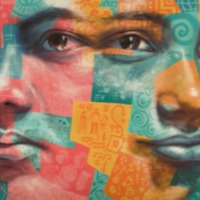
Ali
Sex trafficking is a form of modern slavery that exists throughout the United States. Traffickers use violence, threats, lies, debt bondage and other forms of coercion to compel adults and children to engage in commercial sex acts against their will. The situations that sex trafficking victims face vary, many victims become romantically involved with someone who then forces them into prostitution. Others are lured with false promises of a job, and some are forced to sell sex by members of their own families. Victims of sex trafficking include both foreign nationals and US citizens, with women making up the majority of those trafficked for the purposes of commercial sexual exploitation. In 2015, the most reported venues/industries for sex trafficking included commercial-front brothels, hotel/motel-based trafficking, online advertisements with unknown locations, residential brothels, and street-based sex trafficking. Ali, a young woman who fell into a life of drug addiction and prostitution in Philadelphia, describes the hold sex traffickers have on their victims and how she was ultimately able to escape the life with the help of a deputy sheriff on an FBI task force.
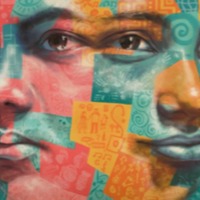
Crystal
Sex trafficking is a form of modern slavery that exists throughout the United States. Traffickers use violence, threats, lies, debt bondage and other forms of coercion to compel adults and children to engage in commercial sex acts against their will. The situations that sex trafficking victims face vary, many victims become romantically involved with someone who then forces them into prostitution. Others are lured with false promises of a job, and some are forced to sell sex by members of their own families. Victims of sex trafficking include both foreign nationals and US citizens, with women making up the majority of those trafficked for the purposes of commercial sexual exploitation. In 2015, the most reported venues/industries for sex trafficking included commercial-front brothels, hotel/motel-based trafficking, online advertisements with unknown locations, residential brothels, and street-based sex trafficking. Crystal grew up in a dysfunctional and abusive household. Having been sexually assaulted from a young age, Crystal points to her childhood experiences as the source of her vulnerability. It was as an adult that Crystal was trafficked for commercial sexual exploitation by her second husband who exploited her drug addictions and forced her to sleep with other women for money. Though she was able to escape her husband, the cycle of trafficking continued. It was after her arrest and the subsequent loss of her son to child services that Crystal was able to break the cycle and escape, going back to school and regaining custody of her son.

Jennifer A
Sex trafficking is a form of modern slavery that exists throughout the United States. Traffickers use violence, threats, lies, debt bondage and other forms of coercion to compel adults and children to engage in commercial sex acts against their will. The situations that sex trafficking victims face vary, many victims become romantically involved with someone who then forces them into prostitution. Others are lured with false promises of a job, and some are forced to sell sex by members of their own families. Victims of sex trafficking include both foreign nationals and US citizens, with women making up the majority of those trafficked for the purposes of commercial sexual exploitation. In 2015, the most reported venues/industries for sex trafficking included commercial-front brothels, hotel/motel-based trafficking, online advertisements with unknown locations, residential brothels, and street-based sex trafficking. Jenifer Kempton was sexually assaulted at a young age. Searching for a love she had never received in childhood when, at the age of 25, she thought she had met the man that would break the cycle of abusive relationships. However, instead he got her addicted to drugs and sold her to a gang where she was, branded with a tattoo and forced in to prostitution on the streets of Columbus, Ohio. Jennifer was eventually able to escape and devoted her time to promote awareness and advocate for social change. Jennifer founded Suvivor's Ink to connect survivors to resources and to cover the marks of ownership and violence given to them by their traffickers.

Barbara (Narrative 2)
Sex trafficking is a form of modern slavery that exists throughout the United States. Traffickers use violence, threats, lies, debt bondage and other forms of coercion to compel adults and children to engage in commercial sex acts against their will. Young people who run away from home are particularly vulnerable to sexual exploitation by traffickers: the Department of Justice estimates that 293,000 youth are at risk. The National Center for Missing and Exploited Children (NCMEC) estimates that “1 in 5 of the 11,800 runways reported to the National Center for Missing & Exploited Children in 2015 were likely sex trafficking victims. Barbara Amaya ran away from an abusive home in North Virginia at 12 years old. By the age of 16 in 1972 she had been sent to three detention centres and lived on the streets of Washington DC and New York City. She spent over 10 years as a victim of commercial sexual exploitation where she was forced to work as a prostitute and hooked on heroin. Today Barbara works to bring awareness of the adversity that survivors of violence and trauma have overcome and trains law enforcement, health care professionals, teachers and counsellors how to interact with victims.